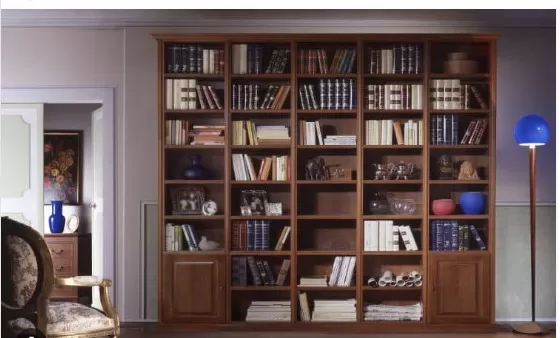Effective Room Soundproofing: Wall-Free Techniques to Try. If you’re seeking a tranquil and serene environment, it’s essential to minimize both ambient and active noise in your living space. Luckily, you can achieve this by learning how to soundproof a room quickly and effortlessly. By implementing effective soundproofing techniques, you can create a peaceful oasis where outside noises are significantly reduced, allowing you to relax and enjoy a quiet atmosphere.
How to Soundproof a Bedroom or Room for a Tranquil Space

When it comes to soundproofing a bedroom or any other room, it’s important to set reasonable expectations.
While soundproofing techniques can significantly reduce sound transfer between rooms, it’s unlikely to completely eliminate the loudest noises. However, by following the methods outlined below, homeowners (and even renters, as seen in the second method) can minimize annoying and distracting sounds to a bearable level.
These techniques are applicable to various types of rooms, such as a Home Office, nursery, family room, or a bedroom intended for soundproofing.
If possible, consider applying wall soundproofing techniques not only to the room in question but also to the adjacent rooms.
For instance, if a master bedroom shares a common wall with an attached garage used as a workshop, it’s recommended to use soundproofing methods on both the garage wall and the inside of the master bedroom wall for optimal results. Here’s a step-by-step guide on how to soundproof your bedroom or any other room, allowing you to create a tranquil space free from distracting noises.
Soundproofing an Existing Wall
While creating soundproof walls is most effective during the construction phase, there are still several methods you can employ to reduce ambient and active noise in an existing room.
Here are two strategies for soundproofing a wall:.
Add Mass: Increasing the mass of the wall is an effective way to reduce noise transmission.
You can achieve this by installing additional layers of drywall or soundproofing panels. Start by removing any existing wall coverings, such as wallpaper or paint.
Then, attach a layer of mass-loaded vinyl (MLV) or soundproof drywall to the existing wall using construction adhesive or screws. Make sure to seal any gaps or seams between the panels to prevent sound leakage.
Finish the wall with a new layer of drywall and paint or wallpaper as desired.
Install Acoustic Insulation: Another strategy is to improve the wall’s soundproofing capabilities by installing acoustic insulation.
This type of insulation is specifically designed to absorb and dampen sound vibrations. Remove a section of the existing wall, preferably near the noise source, and install acoustic insulation batts or panels inside the wall cavity.
Replace the removed section of wall and ensure it is properly sealed.
In addition to these strategies, consider using soundproof caulk or weatherstripping to seal gaps around windows, doors, and electrical outlets.
This helps to minimize sound leakage. It’s also recommended to cover the floor with thick rugs or carpets and hang heavy curtains or soundproof blinds on windows to further reduce noise transmission.
By implementing these soundproofing techniques, you can significantly decrease the amount of noise entering or leaving the room, creating a quieter and more peaceful environment.
Soundproofing Specific Parts of a Room

While soundproofing the walls is a crucial step in reducing unwanted noise, there are other areas of the room that can benefit from additional soundproofing techniques.
Depending on the type of noise and its source, consider implementing the following methods to further dampen sound:.
Windows: Windows are often a significant source of noise transmission.
To soundproof windows, you can use double-glazed or laminated glass, which has excellent sound-dampening properties. Alternatively, you can install soundproof window inserts or acoustic window film.
These options help to create an additional barrier against outside noise. Additionally, sealing any gaps around the window frames with weatherstripping or using acoustic caulk can further reduce sound leakage.
Doors: Just like windows, doors can allow noise to enter or exit a room.
To soundproof doors, you can apply weatherstripping around the door frame to create a tight seal. Another effective method is to install a door sweep at the bottom to block sound from coming through the gap.
If the door has gaps or is hollow, adding mass by attaching soundproofing materials such as MLV or door soundproofing panels can significantly reduce noise transfer.
Floors: Sound can also travel through floors, especially in multi-level buildings.
To minimize impact noise and airborne sound, consider using thick rugs or carpets with a sound-absorbing underlay. This combination helps to absorb sound vibrations and reduce the transmission of noise between floors.
If possible, you can also add a floating floor system with acoustic underlayment for further sound insulation.
Ceiling: If the noise issue comes from above, soundproofing the ceiling can be beneficial.
Installing acoustic panels or soundproofing tiles on the ceiling can absorb sound and prevent it from bouncing around the room. Additionally, adding insulation material to the ceiling cavity can help reduce airborne noise.
Other areas: Pay attention to other areas that can contribute to noise transmission, such as electrical outlets, vents, and gaps around pipes.
Use acoustic sealant or putty pads to seal any openings and prevent sound leaks.
By addressing these specific areas within the room, you can further enhance the overall soundproofing effectiveness and create a quieter environment.
Remember that a combination of different techniques will yield the best results, so feel free to mix and match based on your specific needs and budget.
Furniture and Feng Shui for Soundproofing a Room
In addition to traditional soundproofing techniques, certain furniture choices and the principles of Feng Shui can contribute to creating a more soundproof environment.
Here’s how furniture and Feng Shui can help:.
Furniture Selection: Hard surfaces like metal or solid wood furniture can reflect sound waves, causing them to bounce around the room and increase the overall noise level.
To dampen sound, consider swapping hard chairs for Upholstered Chairs or overstuffed sofas. These softer and more padded furniture pieces absorb sound waves, reducing echoing and creating a quieter atmosphere.
Additionally, adding curtains or drapes to windows can help absorb sound and minimize noise transmission.
Feng Shui Principles: Feng Shui is an ancient Chinese system that aims to create harmony and balance in the living environment.
While it may not directly soundproof a room, following beneficial Feng Shui practices can help block and distract from noise. Here are a few Feng Shui tips for sound management:.
Water Features: Incorporating a water feature, such as a small fountain or tabletop waterfall, can help create a soothing ambiance and provide a gentle trickling sound.
This sound of flowing water can help mask background noises and provide a calming effect.
Plants: Adding live plants throughout the room not only freshens the air but also helps absorb sound.
Plants act as natural sound absorbers, reducing echoes and reverberations. Opt for larger, leafy plants with dense foliage for better sound absorption.
Soft Textiles: Incorporating soft textiles, such as plush rugs, curtains, and cushions, can help absorb sound and reduce noise reflection.
These materials help dampen sound waves and prevent them from bouncing around the room.
Furniture Placement: Feng Shui principles suggest placing furniture in a way that promotes a smooth flow of energy and minimizes disturbances.
By arranging furniture strategically, you can create a more balanced and harmonious space, which may indirectly contribute to a quieter atmosphere.
While furniture and Feng Shui can assist in managing sound in a room, it’s important to note that their impact may be limited compared to traditional soundproofing methods.
For optimal results, it’s recommended to combine these approaches with other soundproofing techniques, such as wall insulation, window treatments, and door seals.
Remember that each room and individual’s preferences may vary, so feel free to experiment and adapt these suggestions to suit your specific needs and aesthetic preferences.
Achieving Soundproofing Success: Combining Techniques for a Tranquil Living Space

When it comes to soundproofing, the most effective approach involves utilizing a combination of techniques to address both external noise transfer and internal sound absorption.
While it’s ideal to implement soundproofing measures during new construction when walls and floors can be designed to minimize sound transmission, existing homes can still benefit from significant noise reduction.
In general, materials that are both dense and soft tend to provide the best sound absorption.
Some examples of such materials include Mass-Loaded Vinyl (MLV), carpeting, cork, and curtains. By incorporating these into your soundproofing strategy, you can make a remarkable difference in reducing unwanted noises.
It’s important to note that soundproofing solutions can be applied to both owned and rented homes.
Everyone deserves to enjoy a peaceful living space free from distractions. Understanding how to soundproof a room empowers you to take control and create a comfortable environment.
By combining various techniques, such as using sound-absorbing materials, sealing gaps, and employing proper insulation, you can create a space that minimizes the impact of external noises and ensures tranquility within.
Whether you’re looking to establish a serene home office, a quiet nursery, or a peaceful bedroom, implementing soundproofing methods will contribute to your overall well-being and enhance the quality of your living experience.
Remember, the journey to soundproofing success involves a thoughtful and comprehensive approach, tailored to your specific needs and circumstances.
By exploring different strategies and utilizing appropriate materials, you can transform your living space into a haven of tranquility and comfort.
*The information is for reference only.